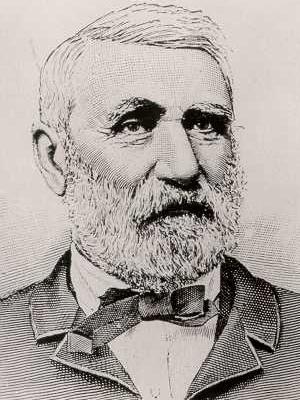
Scouting in Iowa has a long history, from the 1910s to the present day, serving thousands of youth in programs that suit the environment in which they live.

Sioux City is a city in Woodbury and Plymouth counties in the northwestern part of the U.S. state of Iowa. The population was 85,797 in the 2020 census, making it the fourth-most populous city in Iowa. The bulk of the city is in Woodbury County, of which it is the county seat, though a small northern portion is in Plymouth County. Sioux City is located at the navigational head of the Missouri River. The city is home to several cultural points of interest including the Sioux City Public Museum, Sioux City Art Center and Sergeant Floyd Monument, which is a National Historic Landmark. The city is also home to Chris Larsen Park, commonly referred to as "the Riverfront", which includes the Anderson Dance Pavilion, Sergeant Floyd Riverboat Museum and Lewis and Clark Interpretive Center. Sioux City is the primary city of the five-county Sioux City, IA–NE–SD Metropolitan Statistical Area (MSA), with a population of 149,940 in the 2020 census. The Sioux City–Vermillion, IA–NE–SD Combined Statistical Area had a population of 175,638 as of 2020.

The 36th Infantry Division ("Arrowhead") also known as the "Panther Division", the "Lone Star Division", "The Texas Army", and the "T-patchers", is an infantry division of the U.S. Army and part of the Texas Army National Guard. The 36th Infantry Division was first organized during World War I (1914–1918) from units of the Texas and Oklahoma National Guards. After the war, the division was reformed as an all-Texas unit, and was called to service for World War II (1937–1945) on 25 November 1940, was deployed to the European Theater of Operations in April 1943, and returned to the Texas National Guard in December 1945.

The 34th Infantry Division is an infantry division of the United States Army, part of the National Guard, that participated in World War I, World War II and multiple current conflicts. It was the first American division deployed to Europe in World War II, where it fought with great distinction in the Italian Campaign.
The Hundred Days Men was the nickname applied to a series of regiments of United States Volunteers raised in 1864 for 100-day service in the Union Army during the height of the American Civil War. These short-term, lightly trained troops freed veteran units from routine duty to allow them to go to the front lines for combat purposes.

War Eagle was a Dakota-born tribal chief of the Yankton Sioux Tribe.

The Minnesota National Guard is a state-based military force of more than 13,000 soldiers and airmen, serving in 61 communities across the state. Operated in the U.S. state of Minnesota, it is a reserve component of the National Guard.
The 113th Cavalry Regiment is a cavalry regiment of the Iowa National Guard, with history tracing back to the 19th century Indian Wars.

The state of Iowa played a significant role during the American Civil War in providing food, supplies, troops and officers for the Union army.
The following is a list of neighborhoods and commercial districts in Sioux City, Iowa.

The Iowa Army National Guard is a state agency of the State of Iowa, with significant funding from the Federal Government of the United States; and a reserve component of the United States Army. It has dual Federal and State missions. It is empowered to function under control of the Governor, as a State asset in times of emergency or natural disaster, or if needed to carry out limited actions during non-emergency situations to include full scale Enforcement of martial law, when local law enforcement officials can no longer maintain civil control. The National Guard may also be called into federal service in response to a call by the President or Congress.

Theophile Bruguier was a French-Canadian fur trader with the American Fur Company. Bruguier is credited as being the first white settler of what would become Sioux City, Iowa.

The 67th Maneuver Enhancement Brigade is a maneuver enhancement brigade (MEB) of the Nebraska Army National Guard. It derives its lineage from the 67th Infantry Brigade (Mechanized), previously a component of the 35th Infantry Division (Mechanized). The brigade has also been organized as an area support group from 2003–2008, and as a battlefield surveillance brigade from 2008–2016.

The 153d Infantry Regiment is a United States infantry regiment, currently represented in the Arkansas Army National Guard by the 1st Battalion, 153rd Infantry, headquartered at Malvern, Arkansas, and 2nd Battalion, 153rd Infantry, headquartered at Searcy, Arkansas, elements of the 39th Brigade Combat Team. The regiment was also represented by the 3rd Battalion, 153rd Infantry Regiment headquartered at Warren, Arkansas until that unit was deactivated on 5 September 2005. The regiment was activated as the 1st Arkansas Volunteer Infantry for the Spanish–American War, but did not deploy overseas. The regiment was activated for World War I, redesignated as the 153rd Infantry and shipped to France as a part of the 39th Division, but became a replacement division and personnel were reassigned to other AEF units. The regiment was activated for World War II and deployed to the Aleutian Islands, participating in the Aleutian Islands Campaign. Recently, elements of the regiment have participated in two deployments in support of Operation Iraqi Freedom, in 2004 and again in 2008.

The 168th Infantry Regiment is an infantry regiment of the United States Army. The 1st Battalion of the 168th Infantry is part of the 2nd Infantry Brigade Combat Team, 34th Infantry Division, part of the Iowa National Guard.

The 133rd Infantry Regiment is an infantry regiment in the Iowa Army National Guard. It is represented by the 1st Battalion, 133rd Infantry Regiment, part of the 2nd Infantry Brigade Combat Team, 34th Infantry Division.

The 2nd Infantry Brigade Combat Team, 34th Infantry Division is an Iowa Army National Guard unit headquartered in Boone, Iowa.

U.S. Highway 75 (US 75) is a United States Highway in northwestern Iowa. It begins at the Missouri River on a bridge with Interstate 129 (I-129) and US 20. Immediately upon landing in Iowa from Nebraska, I-129 ends at an interchange with I-29. US 20 and US 75 continue around Sioux City on a four-lane expressway until US 20 exits to the east. US 75 heads to the north-northeast, parallel to the Floyd River, until Le Mars. There, Iowa Highway 60 (Iowa 60) continues northeastward on the expressway while US 75 heads due north. Near Hull, it is briefly overlapped by US 18. It leaves the state and enters Minnesota north of Rock Rapids.

The 34th Infantry Division Band is an Army National Guard band stationed in Rosemount, Minnesota. The unit is currently assigned to the Headquarters and Headquarters Battalion, 34th Infantry Division, Minnesota National Guard. The mission of the 34th Infantry Division Band is to provide music throughout the spectrum of military operations to instill in soldiers the will to fight and win, foster the support of citizens and promote the national interests of the United States at home and abroad.

The Theophile Bruguier Cabin is a historic building located in Sioux City, Iowa, United States. Bruguier was a Quebec native who was a trader with the American Fur Company. He was the first Caucasian settler in what would become Sioux City. He settled at the confluence of the Missouri and the Big Sioux Rivers in 1849. With him were his two wives, Dawn and Blazing Cloud, and his father-in-law War Eagle, a chief of Yankton tribe, and extended family. He built a number of log structures on his 560-acre (230 ha) claim. Bruguier took up farming and set up his own fur-trading company. War Eagle and his two daughters, Bruguier's wives, died in the 1850s. Bruguier sold a tract of land to Joseph Leonnais in 1855, and it became the original townsite for Sioux City. He built this single-room cabin for his home about 1860, and married Victoria Brunette in 1862. Bruguier and his wife moved to a farm near Salix, Iowa, where he died in 1895.


















